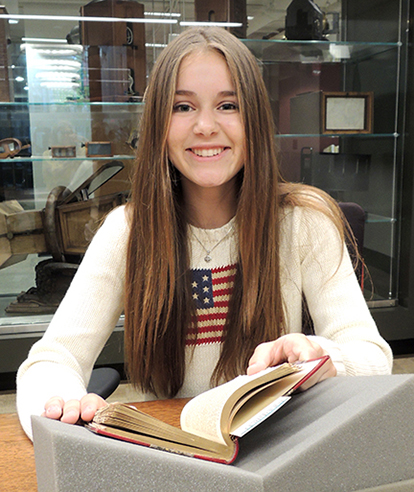 It’s not everyday you get to hold history in your hands! But when Princeton University sophomore Abigail Readlinger gifted us a copy of her children’s novel, I just had to facilitate a connection between her love of American history and our special collections. Later, I asked Abigail to write about her experience and share the inspiration for her charming book…
It’s not everyday you get to hold history in your hands! But when Princeton University sophomore Abigail Readlinger gifted us a copy of her children’s novel, I just had to facilitate a connection between her love of American history and our special collections. Later, I asked Abigail to write about her experience and share the inspiration for her charming book…
Firestone Library’s Special Collections gave me the chance to travel through time. Among its vast array of original documents and fundamental texts is Alexander Hamilton’s very own copy of The Federalist Papers. Writing in the late 1780’s, Hamilton—along with John Jay and James Madison—drafted this series of eighty-five essays in hopes to encourage the ratification of the new Constitution. These Federalist Papers, as evidenced by their substantial contribution to the adoption of our government, are ones of profound and utmost importance. They reveal the nature of American political thought and a corresponding guide by which we ought to live by.
I myself am somewhat obsessed when it comes to The Federalist Papers. Forced to read them during my freshman year of high school, I became immediately attached. I had always loved American history, and The Federalist Papers seemed to transport me directly into the minds of our great Founding Fathers. Desperately bored during the pandemic, but armed with my love for The Federalist Papers, I began to write what is now a published children’s book: The Young Federalists.
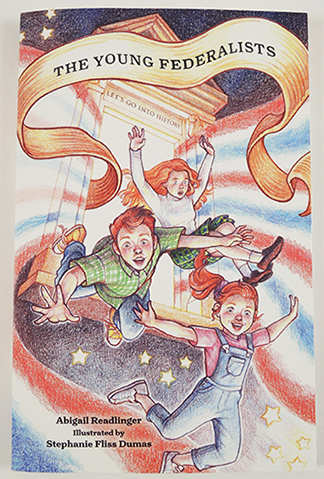
The Young Federalists. Written by Abigail Readlinger and illustrated by Stephanie Fliss Dumas. Mascot Kids, an imprint of Amplify Publishing Group, 2022
The story follows the journey of the Kennedy siblings—Reagan, AJ, and Dolley—as they travel through time, meet Alexander Hamilton and discuss (over a cup of tea!) the importance of Federalist No.1. Just as Hamilton endeavored to inspire his generation through his writing, so also do I hope to inspire mine. The value of the American way is timeless—from then to now, for old and for young.
So when I heard Hamilton’s personal copy of The Federalist Papers just so happened to be located in my own university’s special collections, I jumped at the opportunity to see it.

I still cannot quite articulate the feeling of flipping through the pages of a book both so informative in my life and belonging to one of my most beloved heroes. In 2024, author of The Young Federalists, I was holding the same book that Alexander Hamilton, author of The Federalist Papers, once held over two hundred years earlier.
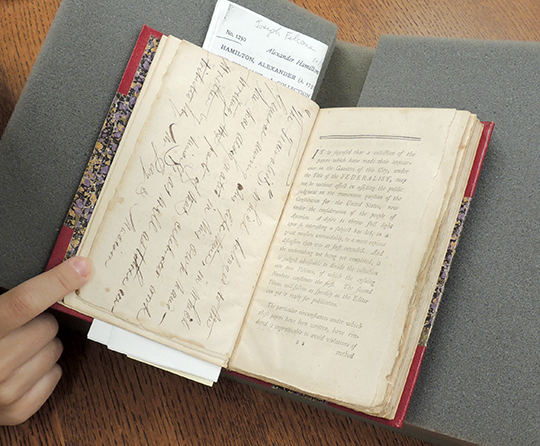
The Federalist Papers. Special Collections, Princeton University Library.
Just like the characters in my book, I was having my own time travel adventure. Visiting special collections, peering over the handwritten scribblings of Hamilton’s notes, and experiencing history hands on, has been by far one of my favorite Princeton experiences. There is so much to explore in our university’s incredible collection, and to have had this opportunity has really been beyond my wildest dreams.
Would you like to see inside this copy of The Federalist Papers? You’ll find a digitized version here. All are welcome to conduct research in Special Collections at Princeton University. If you are interested in visiting, you will find more information here. Do you have a question for Abigail? Email or visit her Instagram.

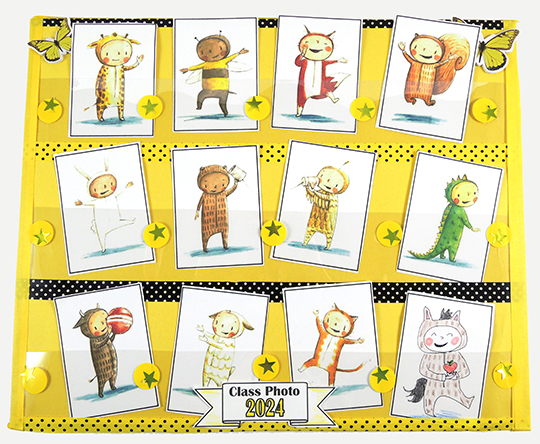 Fall weather is here, kids are back in school, and that means…school picture day! We put a fun twist on class photos when we invited awesome author and illustrator Mary Lundquist to our library. Check out her interview at the end of the post!
Fall weather is here, kids are back in school, and that means…school picture day! We put a fun twist on class photos when we invited awesome author and illustrator Mary Lundquist to our library. Check out her interview at the end of the post!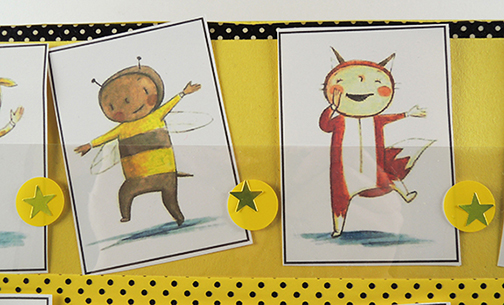 The back of our boxes had flaps, so we hot glued a strategically-placed jumbo craft stick to the top flap, which allowed the class photo display to be propped up like an easel.
The back of our boxes had flaps, so we hot glued a strategically-placed jumbo craft stick to the top flap, which allowed the class photo display to be propped up like an easel.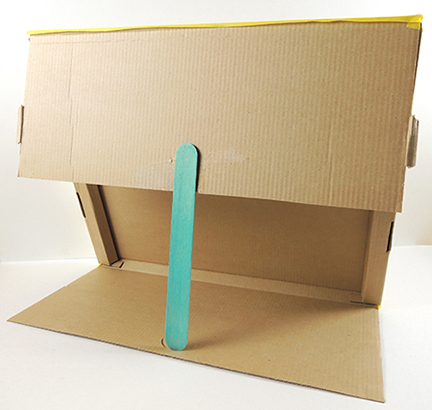 This project also works with a flat piece of cardboard or poster board and simple construction paper pockets. It’s super easy to modify!
This project also works with a flat piece of cardboard or poster board and simple construction paper pockets. It’s super easy to modify!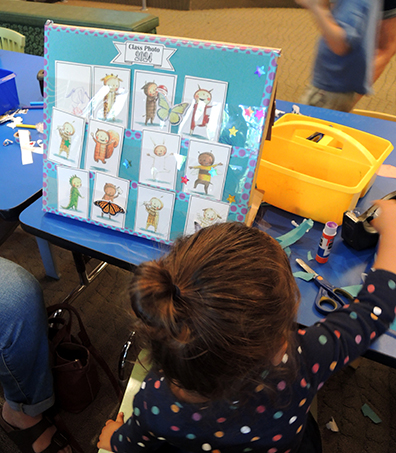 Once kids had finished their class photo display boards, we had everyone gather on the gallery floor. Next, we distributed packs of cards containing the characters in the book. One kid had a pack of just cats, another had just bunnies, another had just foxes…you get the idea. When we said “Go!” the kids (and their caregivers) mingled, trading cards back and forth until they had a complete deck of all eleven unique characters.
Once kids had finished their class photo display boards, we had everyone gather on the gallery floor. Next, we distributed packs of cards containing the characters in the book. One kid had a pack of just cats, another had just bunnies, another had just foxes…you get the idea. When we said “Go!” the kids (and their caregivers) mingled, trading cards back and forth until they had a complete deck of all eleven unique characters.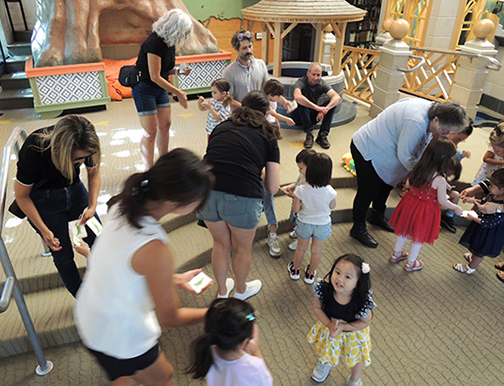 As you can imagine, trading was brisk, and involved a lot of saying hi, talking, sharing, keeping track of your cards. It was so friendly, and so sweet.
As you can imagine, trading was brisk, and involved a lot of saying hi, talking, sharing, keeping track of your cards. It was so friendly, and so sweet.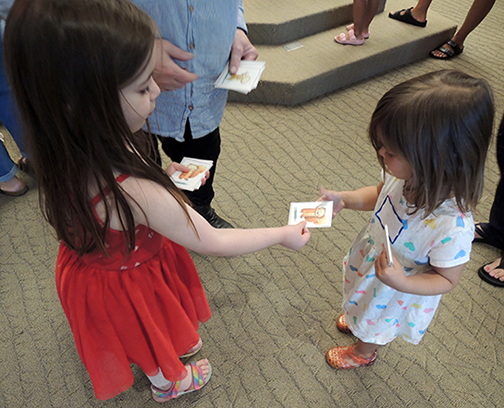 There was one extra special bonus! Each deck had a blank card, so kids could draw themselves on the card as part of the class photo. OR…even BETTER…Mary Lundquist could draw you as one of her characters! Look at this Princeton tiger!
There was one extra special bonus! Each deck had a blank card, so kids could draw themselves on the card as part of the class photo. OR…even BETTER…Mary Lundquist could draw you as one of her characters! Look at this Princeton tiger!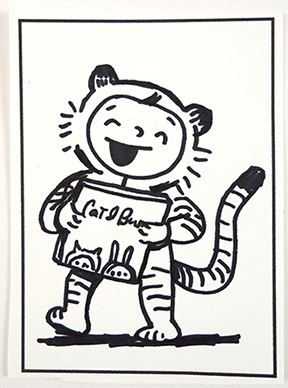 Mary was so fantastic to have at our library! Not only did she give a fabulous read aloud of Cat & Bunny, she did a free draw portion where kids voted on a new book character and she demonstrated how she illustrates!
Mary was so fantastic to have at our library! Not only did she give a fabulous read aloud of Cat & Bunny, she did a free draw portion where kids voted on a new book character and she demonstrated how she illustrates! Later, I caught up with Mary to ask her a few questions about her delightful work…
Later, I caught up with Mary to ask her a few questions about her delightful work…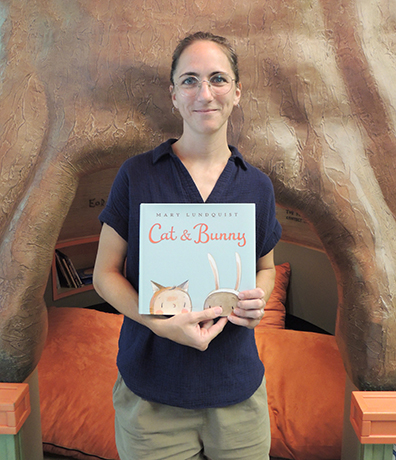
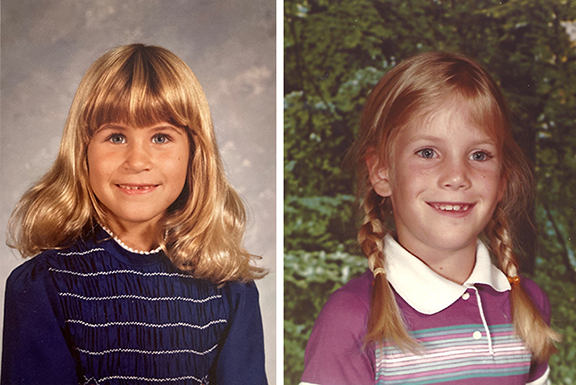
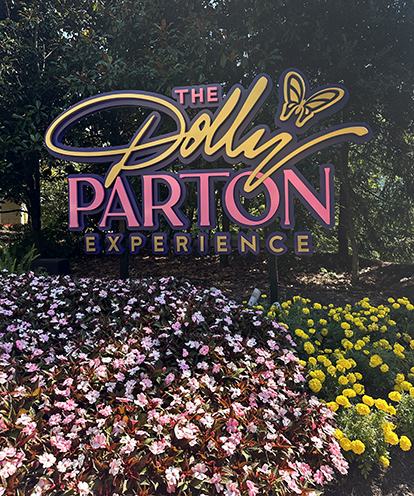
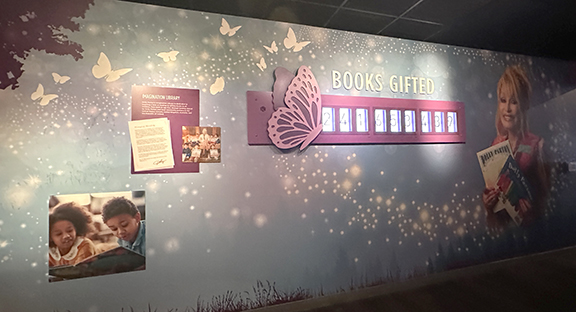
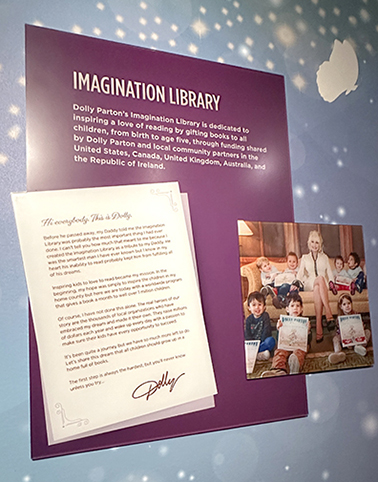 The program became so successful in the United States that it expanded and is now available in Canada, the United Kingdom, Australia, and the Republic of Ireland. Thanks to funding from Dolly and her community partners, over two million books are shipped each and every month to kids around the world!
The program became so successful in the United States that it expanded and is now available in Canada, the United Kingdom, Australia, and the Republic of Ireland. Thanks to funding from Dolly and her community partners, over two million books are shipped each and every month to kids around the world!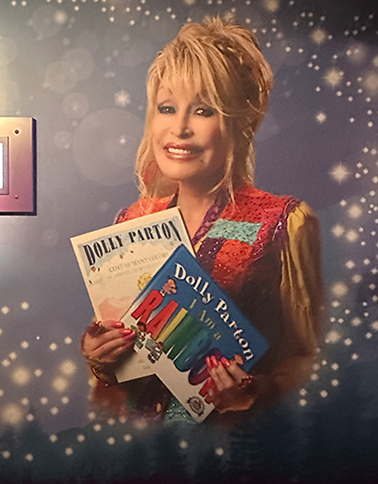 Visit the
Visit the 

 If you’re interested in further literary adventuring, pack your bags and check out
If you’re interested in further literary adventuring, pack your bags and check out 